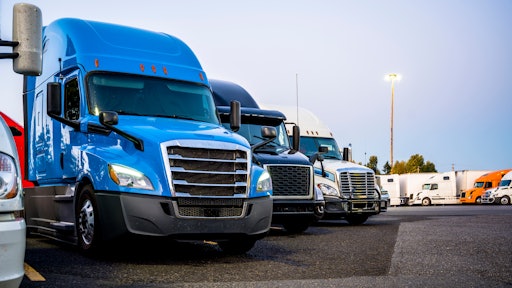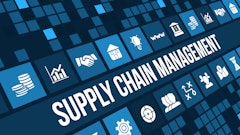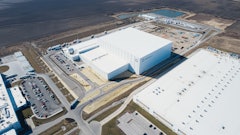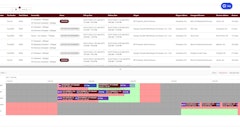
Supply chains are enormously complicated, and when the freight must stay within a defined temperature range at all points along the journey, the complexity increases significantly. That’s why startups and even more established suppliers find the prospect of coordinating the transportation of food, beverages, pharmaceuticals, and other goods through the cold chain daunting.
Shippers have to ensure that goods are transported in temperature-controlled vehicles because they must account for external factors as well, including extreme outdoor heat and cold. They also have to ensure temperatures are controlled in warehouses where items may be temporarily stored and that all applicable safety regulations are met at every point of the journey.
Seasonality is another complicating factor; holidays like Valentine’s Day, Christmas and Thanksgiving create a spike in demand for cold chain transportation so that holiday goods arrive in optimum condition. When all of these elements come together so retailers and customers get access to the quality products they need, it’s clear that temperature control is the unsung hero of the supply chain.
Challenges for shippers and carriers
Suppliers and logistics providers have overlapping challenges, and collaboration is the key, which is why most companies choose to work with trusted logistics experts to move freight. Partnering with the right cold chain professionals is important because temperature-control breakdowns are incredibly costly. Research shows that food losses total about $750 billion annually, and in the biopharma sector alone, shippers lose an estimated $35 billion per year due to failures in temperature control.
Avoiding loss of products due to spoilage isn’t the only challenge. Shippers must ensure that perishable goods are delivered in a timely manner to meet stringent retailer requirements, which for big-box stores typically includes strict arrive-by dates and delivery efficiency standards. Generally, the bigger the retailer, the stricter the requirements, and failure to meet them can result in fines and lost sales opportunities.
Financially, the stakes are high, but health and safety issues loom even larger. Shippers and carriers who handle goods in the cold chain must be sure that products not only stay at the right temperature during transit but are handled correctly during periods when items are stored. Products must be warehoused in food grade-rated facilities that fully comply with FDA regulations for safe handling.
Supply chain managers need to monitor temperature integrity and maintain compliance with regulatory requirements for quality and safety. They must also meet the standards of demanding customers like big-box retailers, working with their contacts to manage deliveries and inventory levels year round, with extra care during seasonal peaks. It’s a delicate balancing act between cost and service.
Finding the right cold chain logistics partner
Logistics partners are essential in helping suppliers maintain that balancing act because suppliers have their own focus and core competencies — producing quality products and growing their business. That’s why the strength of the supplier’s logistics partners is a critical factor in the supplier’s business success.
Since temperature-controlled logistics operations are unique, partner experience with the cold chain is essential. Supply chain managers should look for partners who build facilities around temperature control rather than adding that capability as an afterthought. A partner with food-grade, FDA-compliant facilities can help ensure safe, high-quality product delivery.
To manage customer expectations, suppliers also need to work with a logistics team that has relationships with major retailers and a system to accurately track products and generate reports during transit. The system should provide location as well as temperature status in real time so that the team can take steps quickly if an issue arises, preferably before any goods are damaged.
Supply chain managers who are looking for ways to handle the demands of seasonal rushes on certain categories of goods can work with a partner who has expertise with pick-and-pack operations and display building at the point of sale. That can be enormously helpful at a time when retail customers are looking to suppliers to gain a competitive edge.
Strong reverse logistics capabilities and robust contingency plans for unexpected events are also essential qualities in a potential cold-chain logistics partner. If a food or medication is recalled, suppliers need a way to quickly pull items from shelves. Contingency planning for weather emergencies, etc., can also help suppliers avoid or reduce losses from events outside their control.
The future of temperature-controlled freight
Innovation is another important quality in a cold chain logistics partner because transportation management evolves constantly, requiring new solutions. For example, the pandemic accelerated demand for e-commerce shipment of perishable goods, such as meal kits. The logistics are expensive, so innovative cold chain partners are finding new ways to increase efficiency and lower costs.
Focus on sustainability is also growing, and greater efficiency through innovation that helps lower supplier logistics costs can also reduce the company’s carbon footprint. Whether driven by deeper analytics, the use of artificial intelligence (AI) and blockchain technologies to optimize the cold chain, or other emerging sustainability and efficiency strategies, innovation is essential.
Ensuring that perishable products reach their destination unspoiled and undamaged can be a daunting task. Suppliers need to make sure the right resources are in place, including the relationships, systems and expertise needed to efficiently move goods to their destination. Temperature control, the unsung hero of the supply chain, is the star of the show, but needs a supporting cast to keep rolling.




























